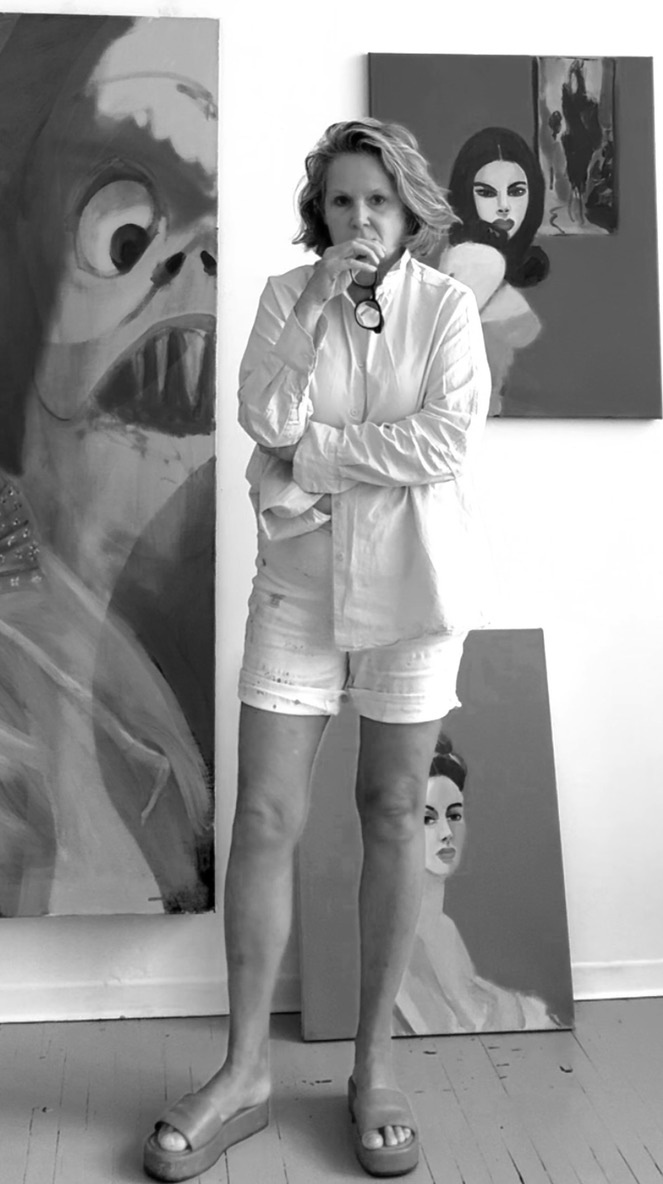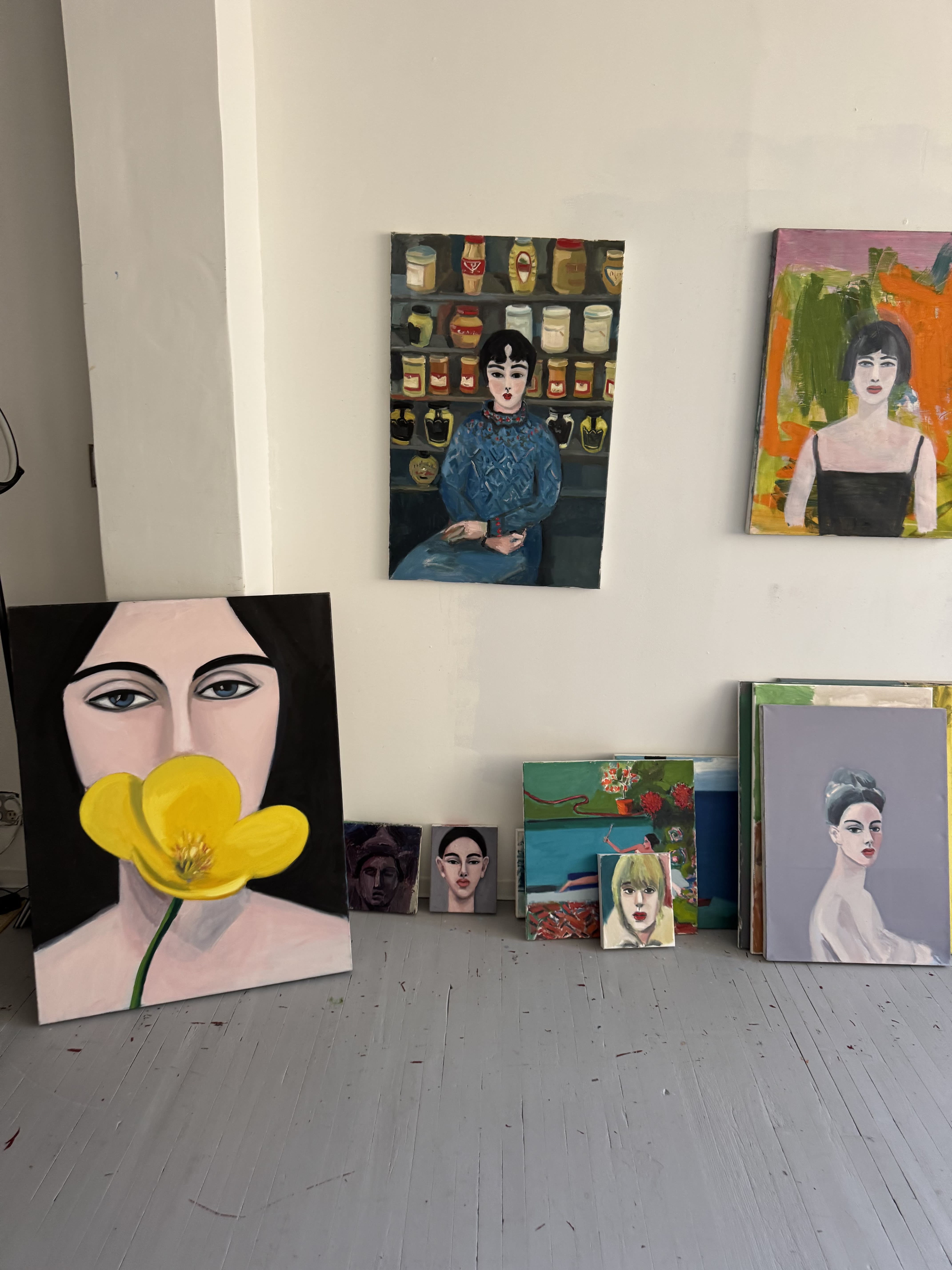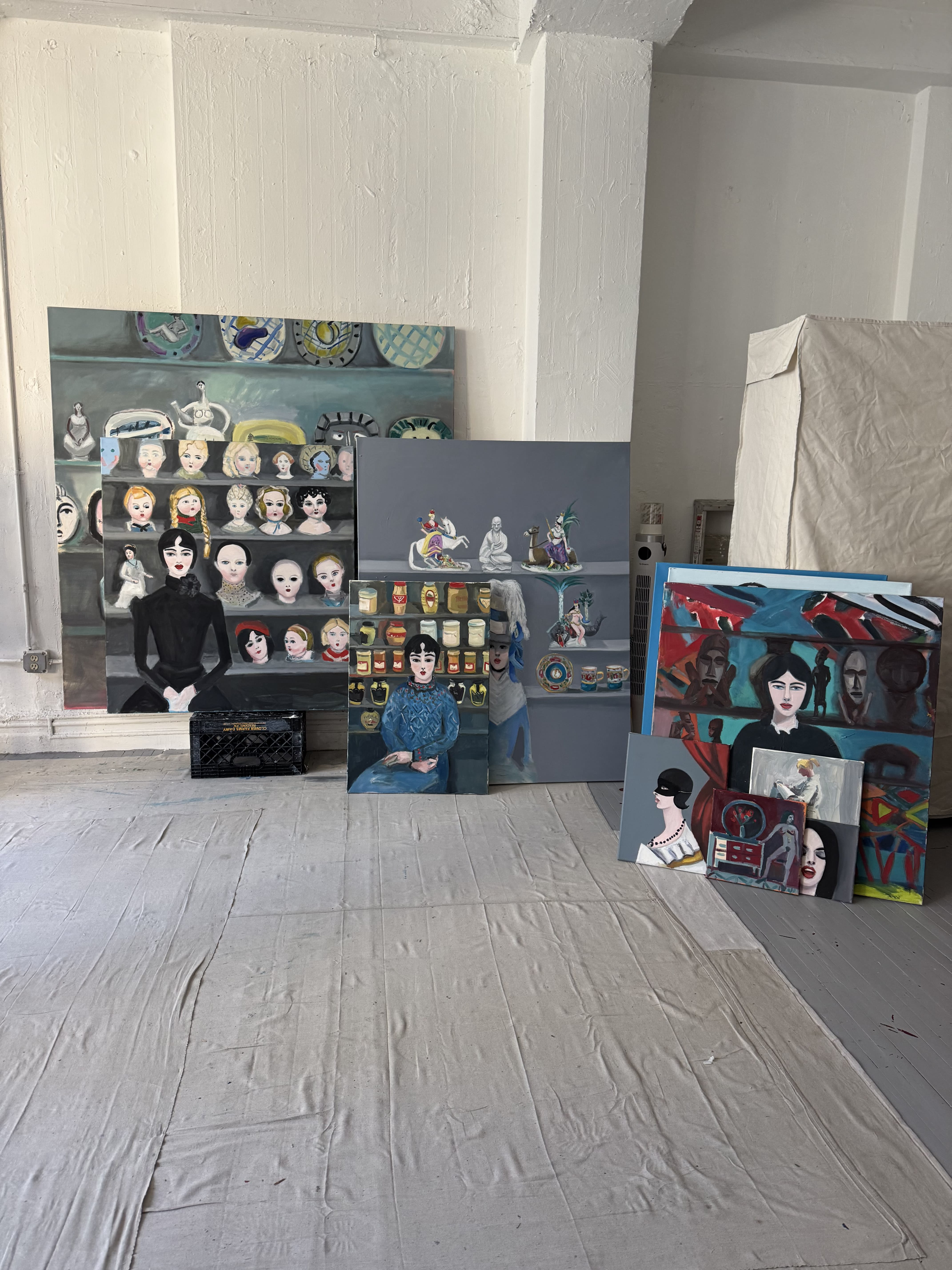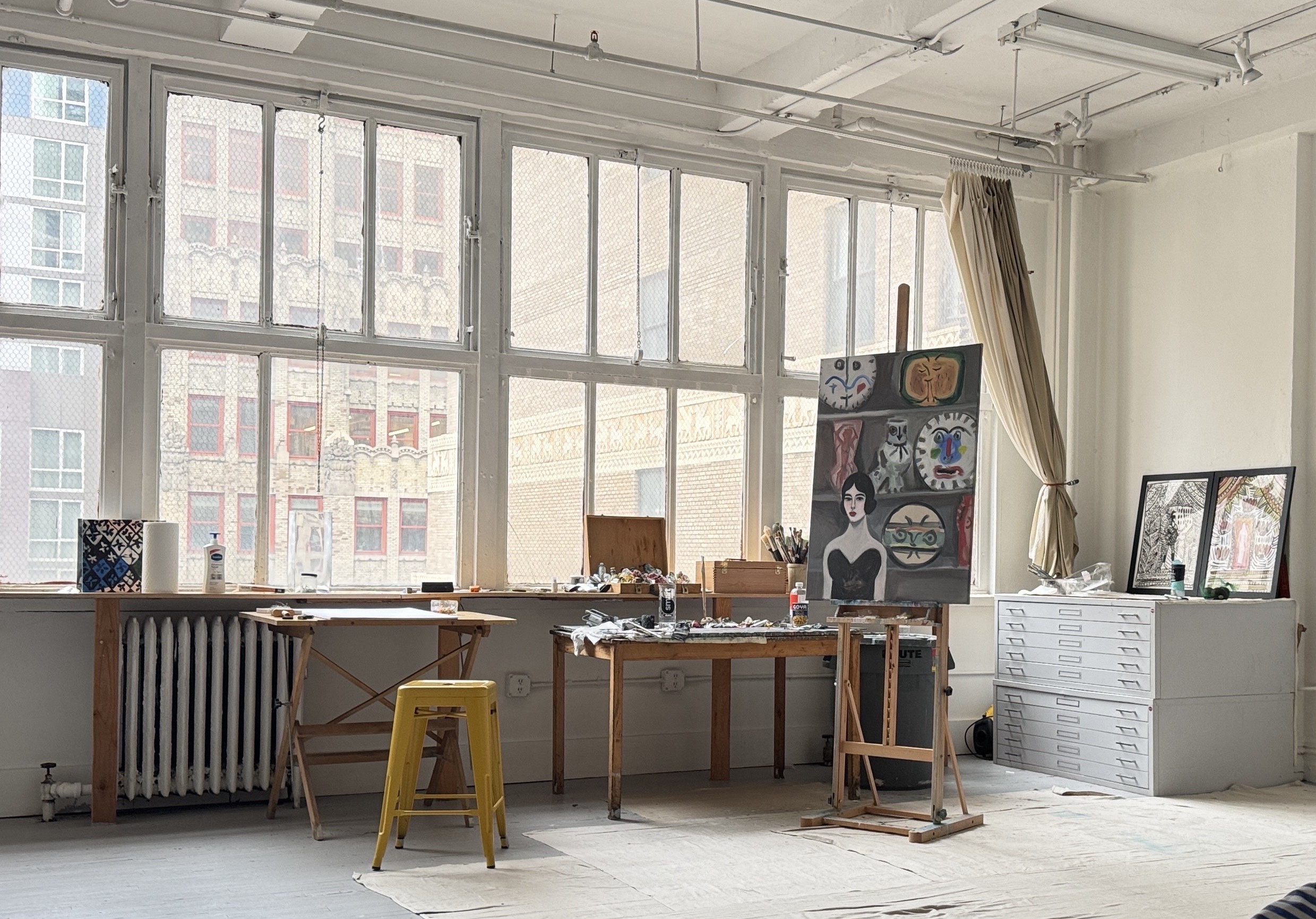
In our conversation, Maureen Dougherty shared how the pandemic shifted her work from abstraction to figuration. Isolated in rural Massachusetts, she had turned to daily ink drawings inspired by symbols and quiet observation. This had led to intimate portraits that captured solitude and presence. Though she was now focused on figures, her work remained rooted in abstract form and emotion—guided always by light, intuition, and a cup of PG Tips tea.

Your work often explored themes of memory and personal history. How did you decide which stories or moments became central to a piece, and how did you translate those into material form?
Maureen had explained, “I had always drawn from lived experience—traveling to places like Morocco or Capri and bringing back colors, textures, and atmosphere. That process had been deeply tied to abstraction: collecting impressions and translating them into gestures on the canvas. But during the pandemic, with travel off the table, everything had turned inward. I had been in a small studio in rural Massachusetts, surrounded by stillness. The world outside my window had been frozen—people weren’t going anywhere—and in that quiet, my imagination had kicked into overdrive.
With only black ink and a brush, I had begun a daily practice of drawing from a book of symbols I had found in my partner’s house. It had been meditative, intuitive, almost like automatic drawing while I had been on hold for hours with banks and agencies. As I had worked, I had begun to notice how people had placed themselves in their own little landscapes—staring out at lakes, sitting alone in parked cars. These quiet rituals of looking and being had become the emotional terrain for a new kind of figuration in my work. The stories I followed had often been unspoken, but deeply felt—they had risen from observation and intuition.”

That inward shift also marked a major evolution in your practice—from abstraction to figuration. How had that change affected your storytelling and your approach to painting?
Maureen had replied, “It had been a big shift, but in many ways, abstraction had never left. Even then, my figures had lived in abstract space. They had twisted, floated, torqued—they weren’t decorative, but had been built from the same logic as abstract forms. I had to re-learn how to paint faces and bodies—how to model volume, how to give weight to a gesture. It had felt like ice-skating for the first time, but I had wanted that freshness. I hadn’t wanted shortcuts or formulas.
What had changed was the sense of urgency around the human form—how it could carry confrontation, intimacy, vulnerability. During the isolation of lockdown, people had been craving connection, and I had found myself drawn to physical presence in a new way. The figure had become a way to mirror that desire—while still letting the paint speak first. My goal had always been for the viewer to feel the painting before they made sense of it. If I could seduce them with paint, and then challenge them with the subject, I had done my job.”

Was there something in your studio that was quietly essential to your practice but might not have shown up in the final work?
Maureen had answered, “Light. Always light. I hadn’t painted shadows or realism—I had painted the feeling of light. That had been very different. My studio’s north light had been everything. It had informed the palette, the emotion, the movement. Also: my PG Tips tea. But really, it had been the light that had anchored the work. If it hadn’t been there, I couldn’t have painted.
